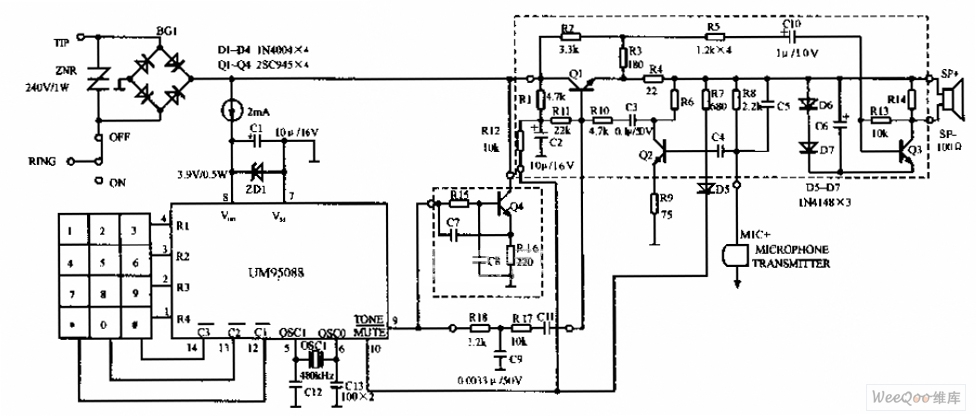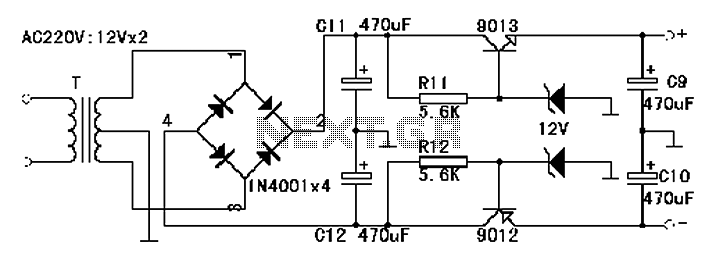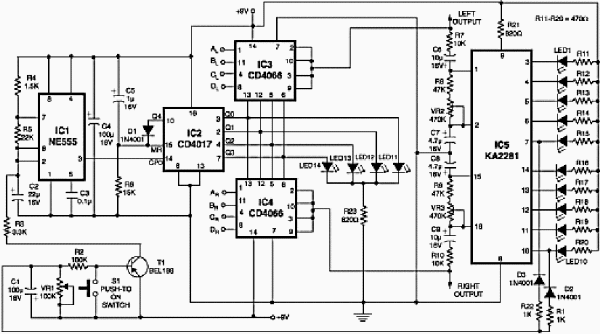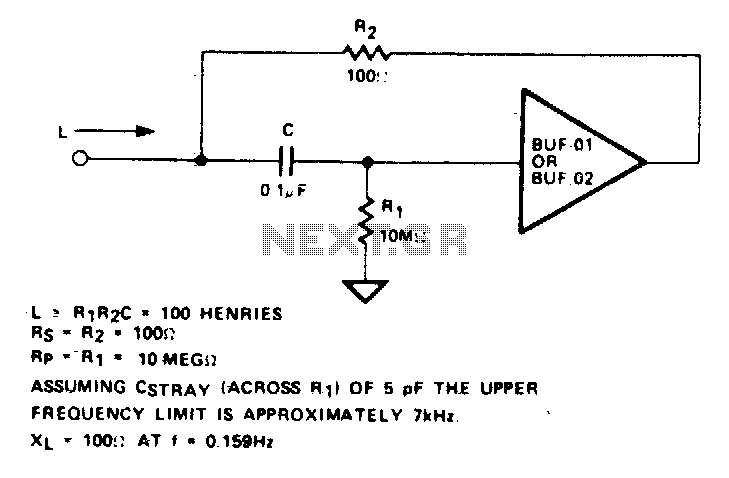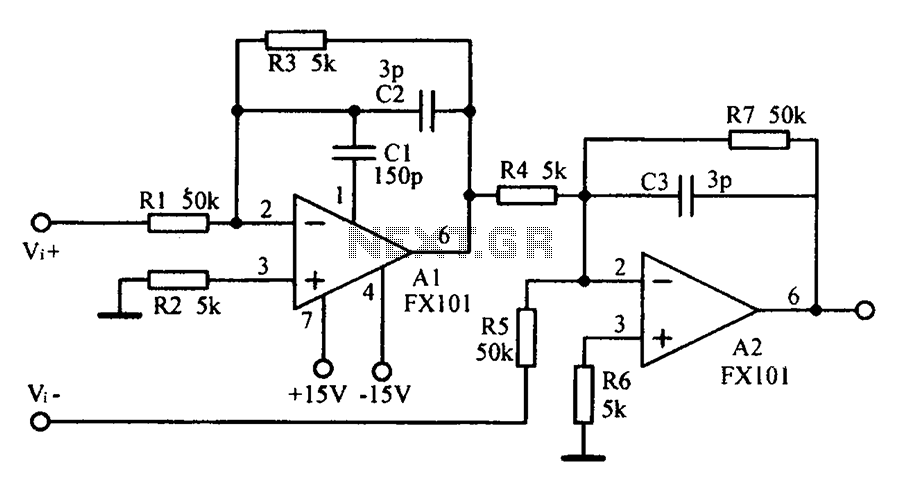
Active crossover circuit with TL074
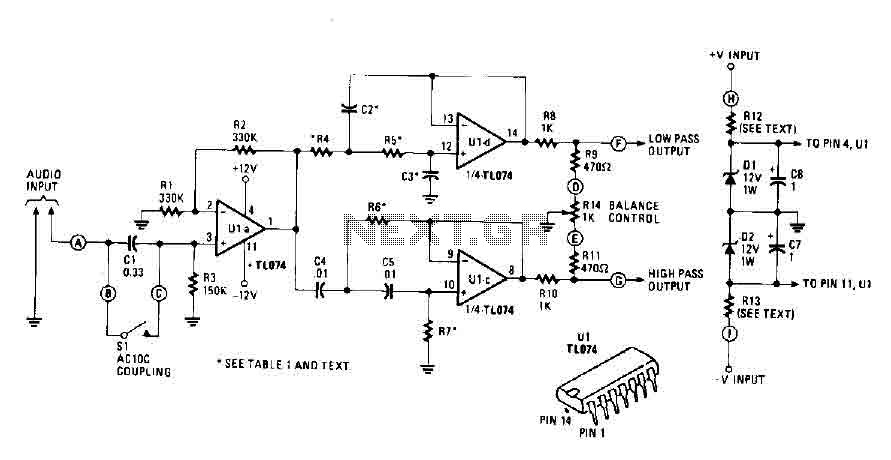
An audio source, such as a mixer, preamp, EQ, or recorder, is connected to the input of the Electronic Crossover Circuit. The signal can be either AC or coupled, depending on the setting of switch 51, which controls the non-inverting input of buffer amplifier U1-a, a section of the quad BIFET low-noise TL074 operational amplifier from Texas Instruments. This stage has a gain of 2, and its output is directed to both a low-pass filter composed of resistors R4, R5, capacitors C2, C3, and operational amplifier U1-d, as well as a high-pass filter formed by resistors R6, R7, capacitors C4, C5, and operational amplifier U1-c. These filters employ a 12 dB/octave Butterworth design, chosen for its optimal balance between damping and phase response. The values of the capacitors and resistors vary based on the selected configuration of the device. The filter outputs are routed to a balancing network made up of resistors R8, R9, R10, R14, and potentiometer R11 for balance adjustment. When the potentiometer is centered, both high and low filters achieve unity gain bandwidth. Power for the electronic circuit is managed by components R12, R13, D1, and D2, and is decoupled by capacitors C6 and C7.
The Electronic Crossover Circuit is designed to effectively separate audio signals into different frequency bands, allowing for enhanced control over audio output in various applications. The use of a quad BIFET operational amplifier ensures low noise and high performance, making it suitable for professional audio environments. The gain stage provided by U1-a amplifies the incoming audio signal to a suitable level for processing.
The low-pass filter, constructed with resistors R4, R5 and capacitors C2, C3, works in conjunction with operational amplifier U1-d to allow frequencies below a certain cutoff to pass through while attenuating higher frequencies. Conversely, the high-pass filter, utilizing resistors R6, R7 and capacitors C4, C5 with operational amplifier U1-c, permits higher frequencies to pass while attenuating lower frequencies. The Butterworth filter design is particularly advantageous as it maintains a flat frequency response within the passband and offers a smooth roll-off beyond the cutoff frequency, minimizing phase distortion.
The balancing network, comprising resistors R8, R9, R10, R14 and potentiometer R11, allows for fine-tuning of the output signals. This feature is particularly useful in live sound applications or studio settings where precise control over audio levels is required. The unity gain bandwidth achieved when the potentiometer is centered ensures that both the high-pass and low-pass outputs are balanced, providing an optimal listening experience.
Power regulation within the circuit is achieved through the use of resistors R12, R13 and diodes D1, D2, which stabilize the voltage supplied to the operational amplifiers and filters. The decoupling capacitors C6 and C7 further enhance the stability of the power supply by filtering out any high-frequency noise, ensuring that the operational amplifiers function effectively without interference.
Overall, the Electronic Crossover Circuit is a critical component in audio processing, enabling the separation of audio frequencies for improved sound quality and control. Its design considerations, including the choice of filters and amplification stages, reflect a thorough understanding of audio engineering principles.An audio source, like a mixer, preamp, EQ, or a recorder, is fed to the input of the Electronic Crossover Circuit. This signal is either AC or coupling, depending on the setting of switch 51, the non-inverting input of buffer amplifier Ul-a, a section of a quad BIFET, low amp TL074 noise made by Texas Instruments op.
This stage has a gain of 2, and its output is distributed to both a low pass filter made by R4, R5, C2, C3, and Uld op-amp, and a high-pass filter made by R6, R7, C4, C5, and op amp ULC. These are12 dB / octave Butterworth filters. The response of the Butterworth filter was chosen because it gives the best compromise between the damping and phase.
The Electronic Crossover Circuit is designed to effectively separate audio signals into different frequency bands, allowing for enhanced control over audio output in various applications. The use of a quad BIFET operational amplifier ensures low noise and high performance, making it suitable for professional audio environments. The gain stage provided by U1-a amplifies the incoming audio signal to a suitable level for processing.
The low-pass filter, constructed with resistors R4, R5 and capacitors C2, C3, works in conjunction with operational amplifier U1-d to allow frequencies below a certain cutoff to pass through while attenuating higher frequencies. Conversely, the high-pass filter, utilizing resistors R6, R7 and capacitors C4, C5 with operational amplifier U1-c, permits higher frequencies to pass while attenuating lower frequencies. The Butterworth filter design is particularly advantageous as it maintains a flat frequency response within the passband and offers a smooth roll-off beyond the cutoff frequency, minimizing phase distortion.
The balancing network, comprising resistors R8, R9, R10, R14 and potentiometer R11, allows for fine-tuning of the output signals. This feature is particularly useful in live sound applications or studio settings where precise control over audio levels is required. The unity gain bandwidth achieved when the potentiometer is centered ensures that both the high-pass and low-pass outputs are balanced, providing an optimal listening experience.
Power regulation within the circuit is achieved through the use of resistors R12, R13 and diodes D1, D2, which stabilize the voltage supplied to the operational amplifiers and filters. The decoupling capacitors C6 and C7 further enhance the stability of the power supply by filtering out any high-frequency noise, ensuring that the operational amplifiers function effectively without interference.
Overall, the Electronic Crossover Circuit is a critical component in audio processing, enabling the separation of audio frequencies for improved sound quality and control. Its design considerations, including the choice of filters and amplification stages, reflect a thorough understanding of audio engineering principles.An audio source, like a mixer, preamp, EQ, or a recorder, is fed to the input of the Electronic Crossover Circuit. This signal is either AC or coupling, depending on the setting of switch 51, the non-inverting input of buffer amplifier Ul-a, a section of a quad BIFET, low amp TL074 noise made by Texas Instruments op.
This stage has a gain of 2, and its output is distributed to both a low pass filter made by R4, R5, C2, C3, and Uld op-amp, and a high-pass filter made by R6, R7, C4, C5, and op amp ULC. These are12 dB / octave Butterworth filters. The response of the Butterworth filter was chosen because it gives the best compromise between the damping and phase.
The values of capacitors and resistors varies depending on the selected connection that your device works. The filter outputs are fed to a balancing network made by R8, R9, RIO, R14 and potentiometer RLL balance.
When the potentiometer is at its center position, there is a unity gain bandwidths for both high and low filters. Power for the electronic circuit is regulated by Crossover R12, RI3, Dl and D2, and decoupled by C6 and C7.
